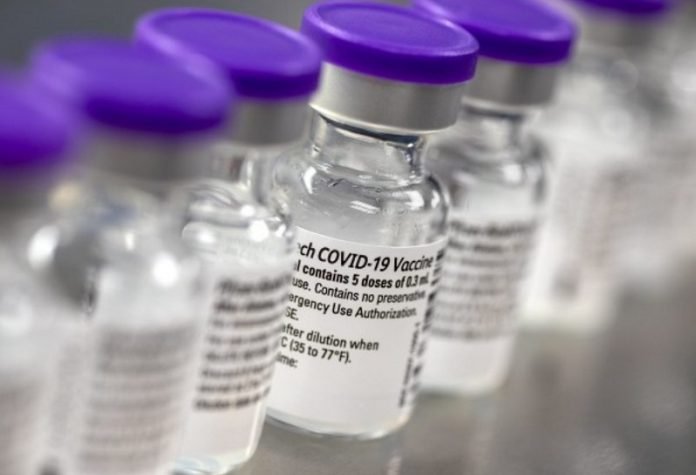
By now, everyone has seen countless images of people receiving the COVID-19 vaccine.
But once it’s injected into the upper arm, how does it actually interact with the body?
Dr. M. Fahad Khalid, chief of the Division of Hospital Medicine at Penn State Health Milton S. Hershey Medical Center, and Dr. Mohammad Ali, an infectious diseases physician at Penn State Health Holy Spirit Medical Center, say while the vaccine doesn’t contain any live COVID-19 virus, it teaches the human immune system to protect against it.
Both vaccines that received Emergency Use Authorization from the U.S. Food and Drug Administration (FDA)—the Pfizer-BioNTech and Moderna vaccines—are mRNA (messenger RNA) vaccines.
They are not live viruses. Instead, they work by giving your body a blueprint to create a piece of the virus that causes COVID-19, called a spike protein.
Once you receive the vaccine, your cell’s machinery uses the mRNA instructions to make the spike protein.
This protein is then displayed on the cell surface, and the immune system sees it and responds to it. While mRNA is a type of genetic code, it never enters the center (nucleus) of your cells.
“That means it never converts into DNA,” Khalid said. “The mRNA itself is destroyed by the cells after they produce the spike protein.”
The spike protein the vaccines create is the same one found on the surface of the virus that causes COVID-19. However, the vaccines do not contain any live virus.
“The spike protein itself cannot cause an infection,” Ali said.
Khalid and Ali also addressed many common questions people have about both vaccines:
The vaccines were approved quickly. Are they safe? Advances in vaccinology and vaccine production allowed pharmaceutical companies to create vaccines in months. However, both vaccines followed rigorous FDA guidelines, including the normal regimen of clinical trials and Phase 1, 2 and 3 trials.
“Their effectiveness is tremendous,” Ali said. “The flu vaccine is typically 40% to 60% effective, and the COVID-19 vaccines are 94% to 95% effective.”
Do people get severe allergic reactions to the vaccine?
The Centers for Disease Control and Prevention (CDC) reports a limited number of incidents where people experienced a severe allergic reaction (anaphylaxis) or reaction such as hives, swelling or wheezing.
The CDC recommends against people taking the vaccine who had a prior severe allergic reaction to any ingredient in the COVID-19 vaccine.
People who have had allergic reactions to other vaccines should ask their doctor about taking the COVID-19 vaccine. People with non-vaccine related allergies—food allergies, pet allergies, seasonal allergies—are safe to get vaccinated, says the CDC.
Will the vaccine side effects be worse than getting COVID-19? Possible side effects, such as swelling or pain at the injection site, fever, headache or muscle pain, are temporary.
“Those side effects aren’t nearly as bad as severe cases of COVID-19, which can be fatal,” Khalid said.
Do I need a vaccine if I already had COVID-19? Yes. Currently, the CDC recommends vaccination even in people who have had COVID-19 in the past. This is because we do not know how long immunity to the virus lasts after someone is infected.
Do I need to wear a mask after getting the COVID-19 vaccine? Yes, you must continue to wear a mask, practice social distancing and continue to wash your hands.
The vaccine protects you from getting sick with COVID-19, but researchers still don’t know if individuals can still get infected and transmit the virus to others.
Is there any kind of microchip tracking in the vaccines? No. The vaccine also will not cause infertility.
“There’s a lot of misinformation out there,” Ali said. The most trustworthy resource for accurate information: the CDC website.
Alison Enimpah, a registered nurse who provided direct care for COVID-19 patients at the Milton S. Hershey Medical Center, was among the earliest group of health care workers to get vaccinated. She’ll receive her second dose later this month.
“The vaccine adds a layer of reassurance that we’re making forward progress in keeping ourselves and our community safe during the pandemic,” she said.



